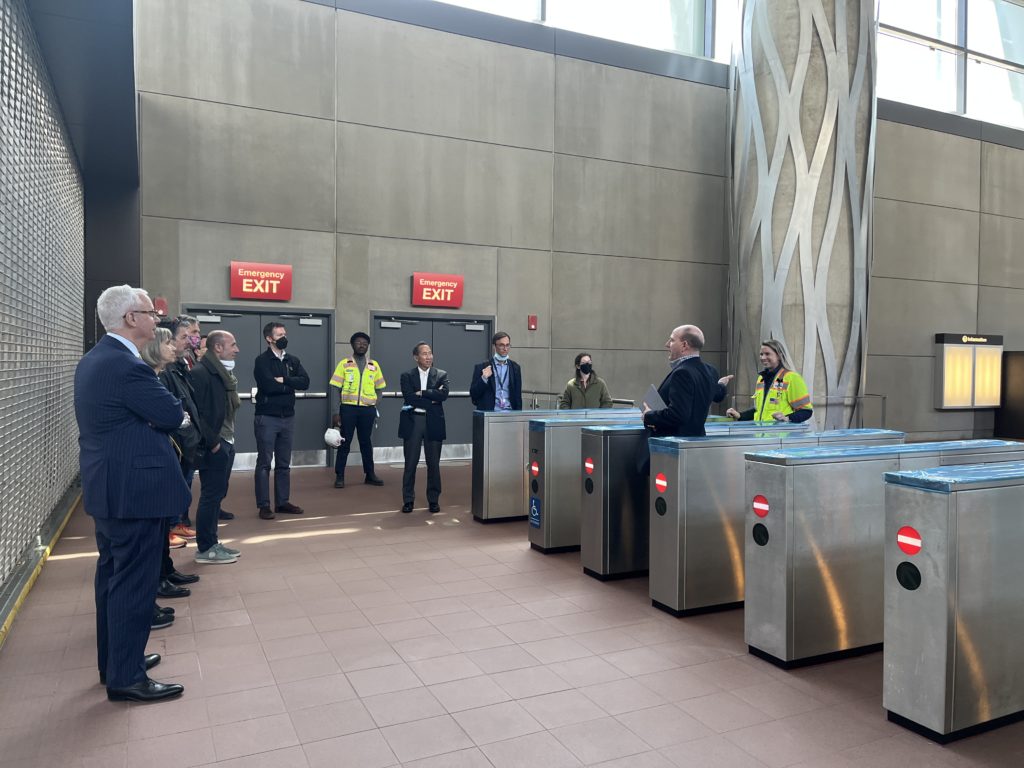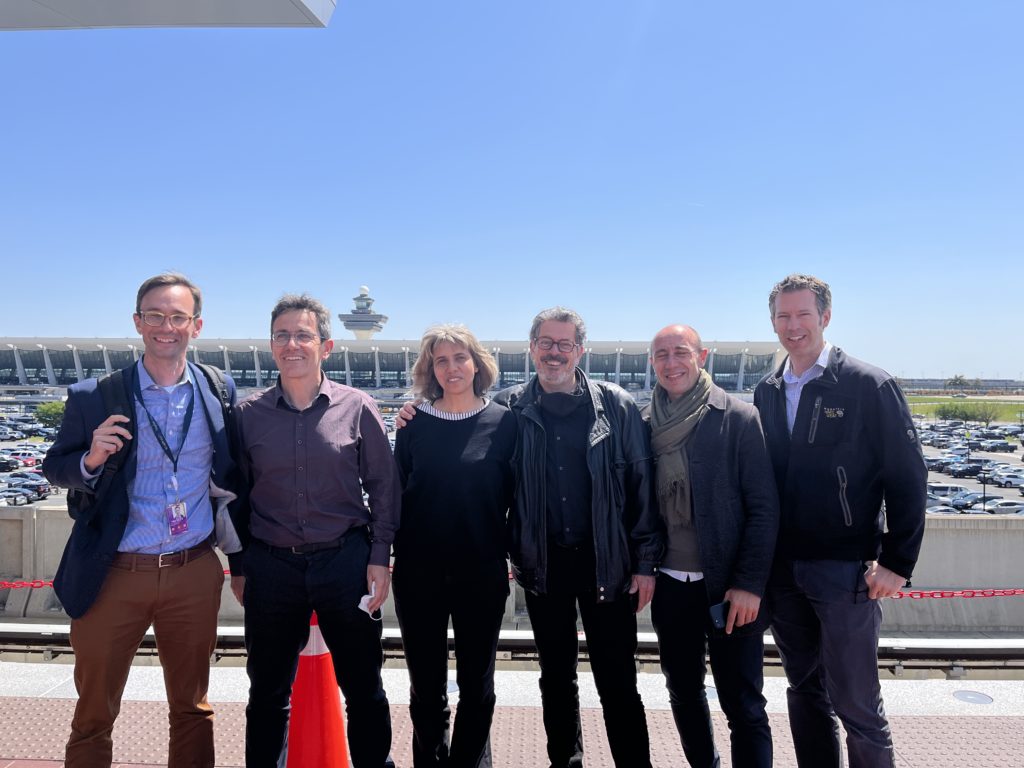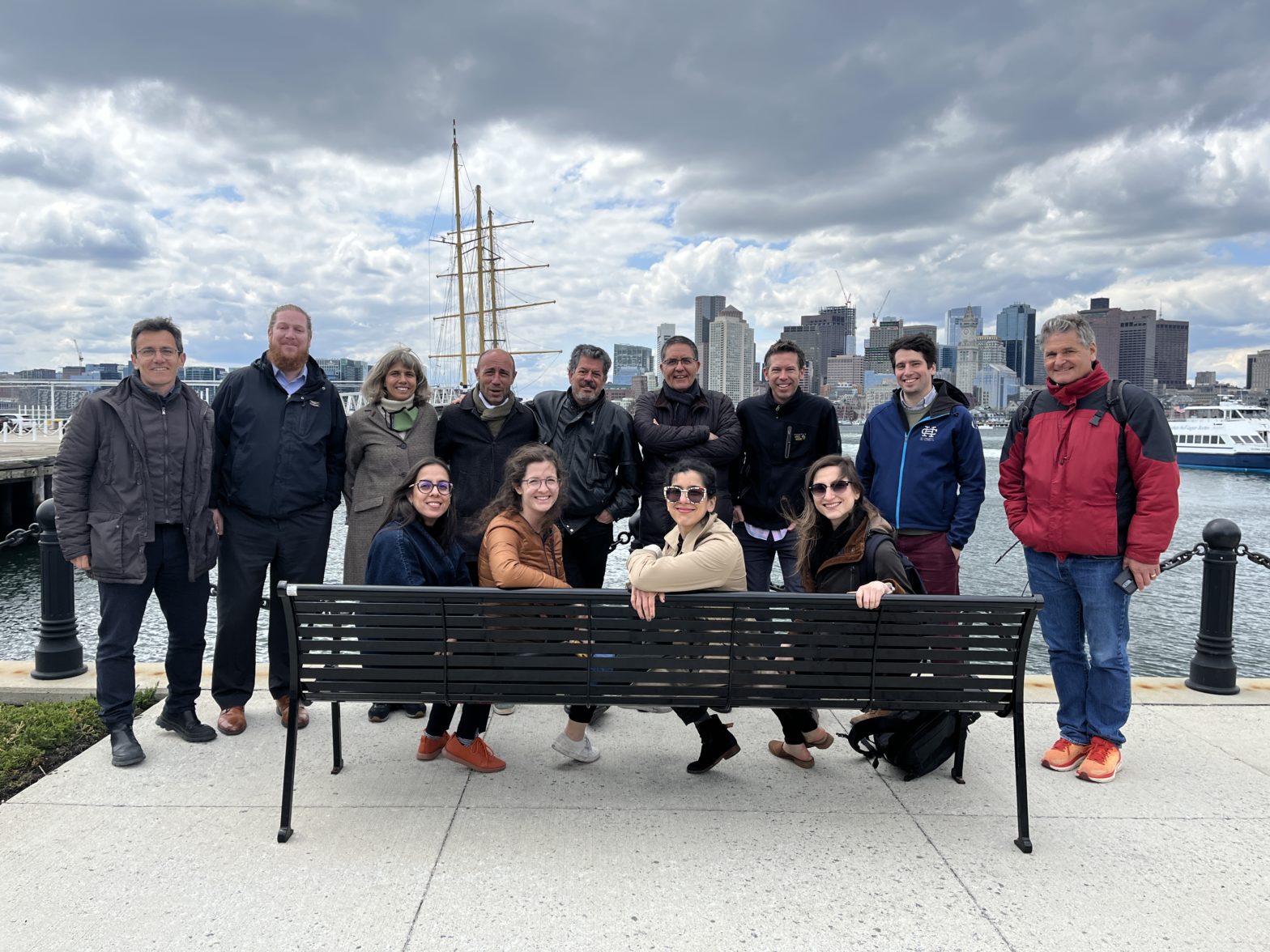25 – 29 April 2022
The visit from Barcelona Metropolitan Area (AMB), Spain, to Boston and Northern Virginia, USA, was the first between three cities/metro areas as part of the IURC North America Program. The five visiting delegates from Spain, along with three representatives from the US, spent an entire week exchanging experiences and best practices around:
- Renovation Wave – Energy efficiency in buildings
- Urban Agenda/ Planning – Sustainable urban development strategies and public space
- Mobility & Transport – Streets for people and metropolitan connections
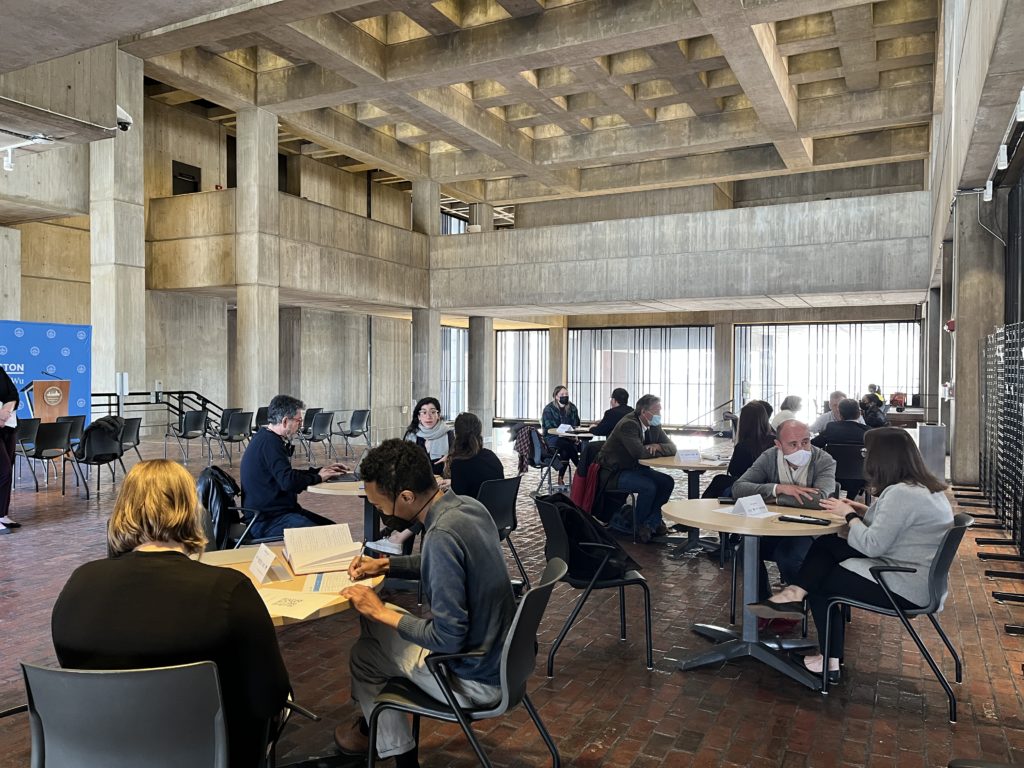
On April 25th, the visit started at Boston City Hall with a welcome and overview of the City’s context. The delegates then participated in a “speed dating” session where representatives from different sectors related to climate and energy in Boston explained policies and programs. At the same time, Boston city officials got to hear from AMB’s perspective.

Afterward, the Stone Living Lab and UMass Boston conducted a boat tour of the Harbor Islands. They pointed out some examples of the nature-based solutions for climate change mitigation they are exploring. The alliance that conforms the Stone Living Lab has proven successful since it makes obtaining funds for nature-based solutions research and development easier while bridging the gap between academic research and implementation by the City of Boston.
In the afternoon, the group was divided into two. One group visited the Massachusetts Clean Energy Center (MassCEC), a state economic development agency dedicated to accelerating the clean energy sector’s growth across the Commonwealth to spur job creation, deliver statewide environmental benefits, and secure long-term economic growth for the people of Massachusetts. The second group met with Lauren Shurtleff, Director of Boston Planning and Development Agency, and Richard McGuinness, Deputy Director for Climate and Environmental Planning to share similarities and differences in how urban planning departments work in each city/metro area.
The following day delegates from AMB and NVRC participated in a walking tour of Fort Point Channel, where 19th-century warehouses have become a vibrant neighborhood, and bold new designs are mitigating future flood risks.
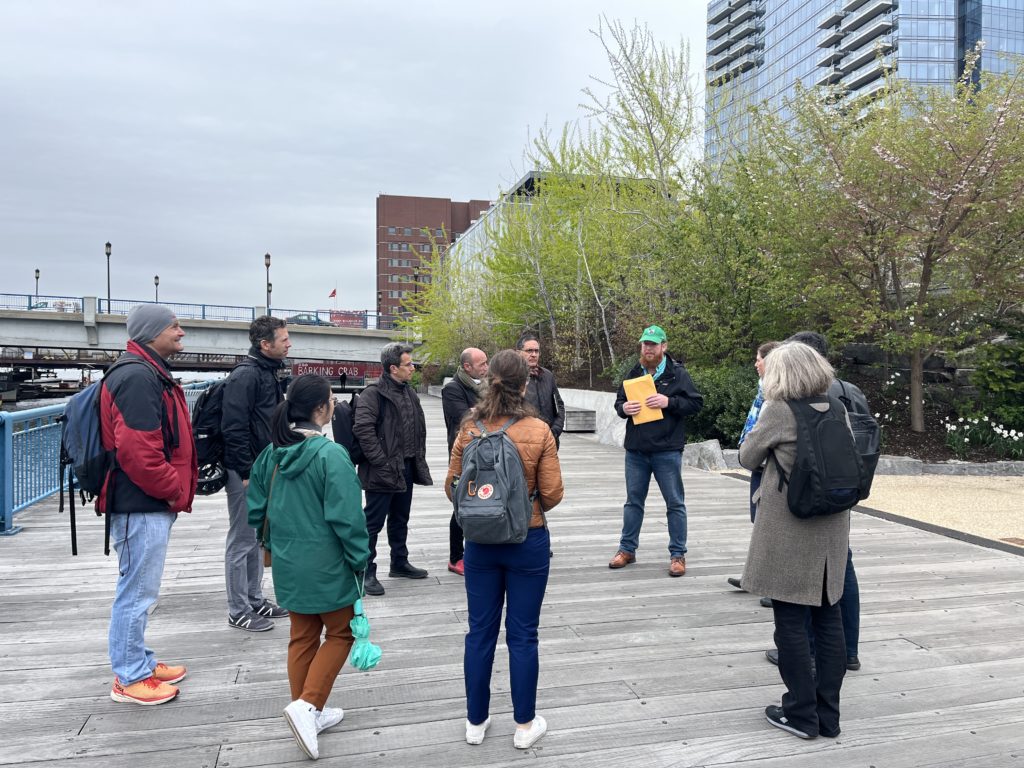
The visitors learned about new strategies such as floodable public spaces, bridges that transform into barriers, and benches that prevent city flooding. The walking tour was followed by public space design presentations from Boston and AMB officials, which covered pilot planning and implementation, community engagement, and the importance of looking globally for new approaches.
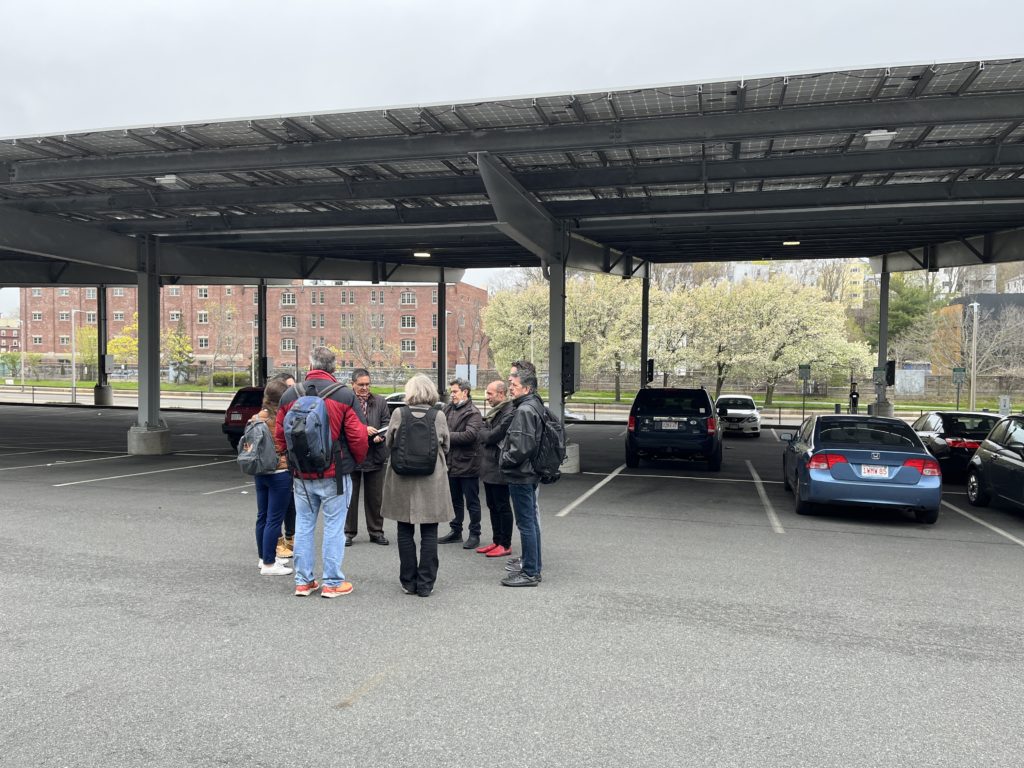
The delegates then walked to the parking station for Good 2 Go, an income-tiered, equity-focused electric car share system.
The program manager explained that aside from incentivizing the use of electric vehicles, Good 2 Go prioritizes users who need a car to travel to school, attend doctor’s appointments, work, and other needs that are sometimes not accessible to the most vulnerable population via public transport.
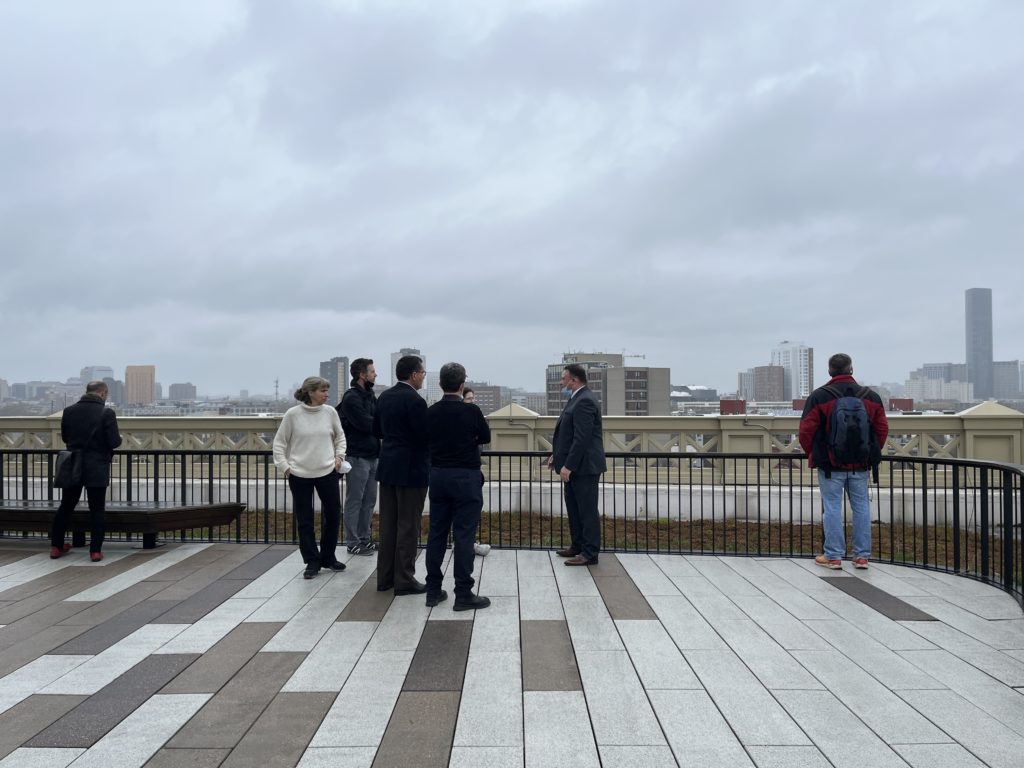
The day ended with a visit to the Bruce Bolling Building, which hosts the Boston Public Schools administrative departments. The restoration of this historic building took into consideration the creation of public areas that support local businesses and energy efficiency.
On the third day, the group met at the East Boston Public Library, where Nayeli Rodriguez, Program Director at MONUM, explained how Boston had planned new public spaces around libraries in response to the pandemic. These facilitated WIFI access and now offered other benefits, such as misting tents to reduce heat and direct access to city services and job fairs. Joe Backer from the Mayor’s Office of Housing led the second part of the tour, who explained that 80% of their affordable housing projects will need to be retrofitted to be energy efficient by 2050. As a result, Boston created the Building Emissions Reduction and Disclosure Ordinance (BERDO), which defines clear pathways to carbon neutrality while keeping residents in place. In the case of new buildings, he showcased a couple of affordable housing projects and their work to make them energy efficient.
The delegates were then led on a walking tour of East Boston. The visit included strategies to prevent flooding in newly developed neighborhoods on the waterfront, Maverick Square, a transportation hub with several mobility options, and the SeaWalls public art exhibit of murals in public spaces and schools with themes related to biodiversity and ecological conservation. Afterward, the representatives from AMB gave a presentation to Boston officials on innovative housing projects and sustainable urban mobility and transport strategies such as low emission zones, intermodal planning, and programs to incentivize the use of public transport such as T-verda. In the afternoon, the group traveled from Boston to Alexandria to start the visit in Northern Virginia.
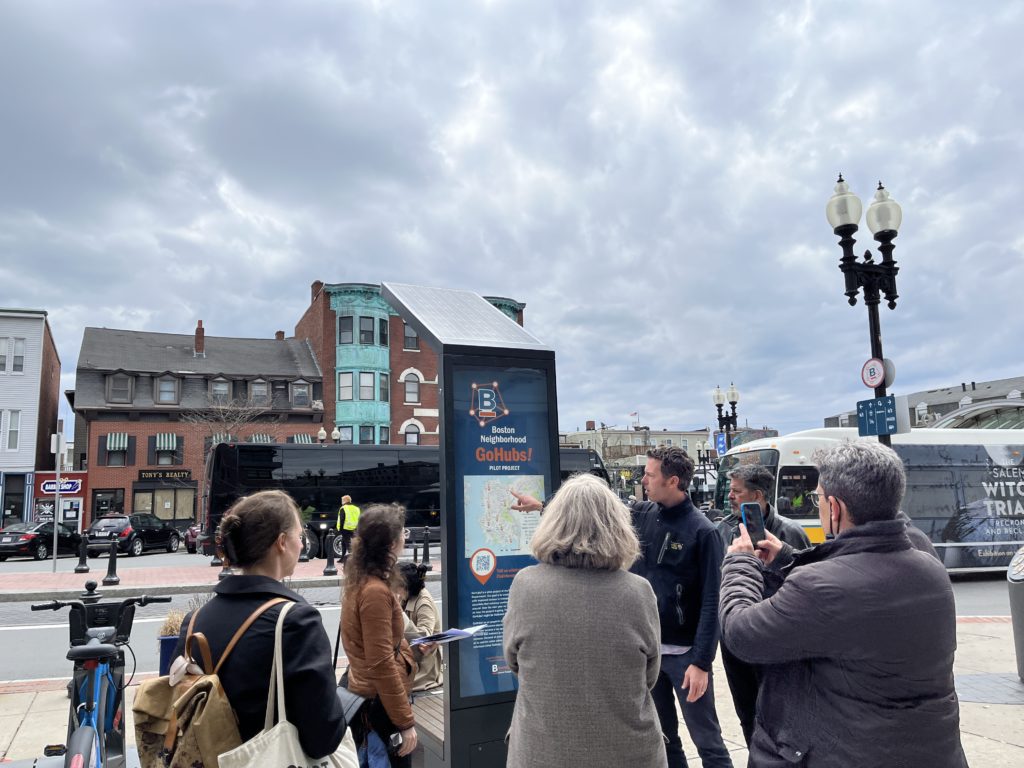
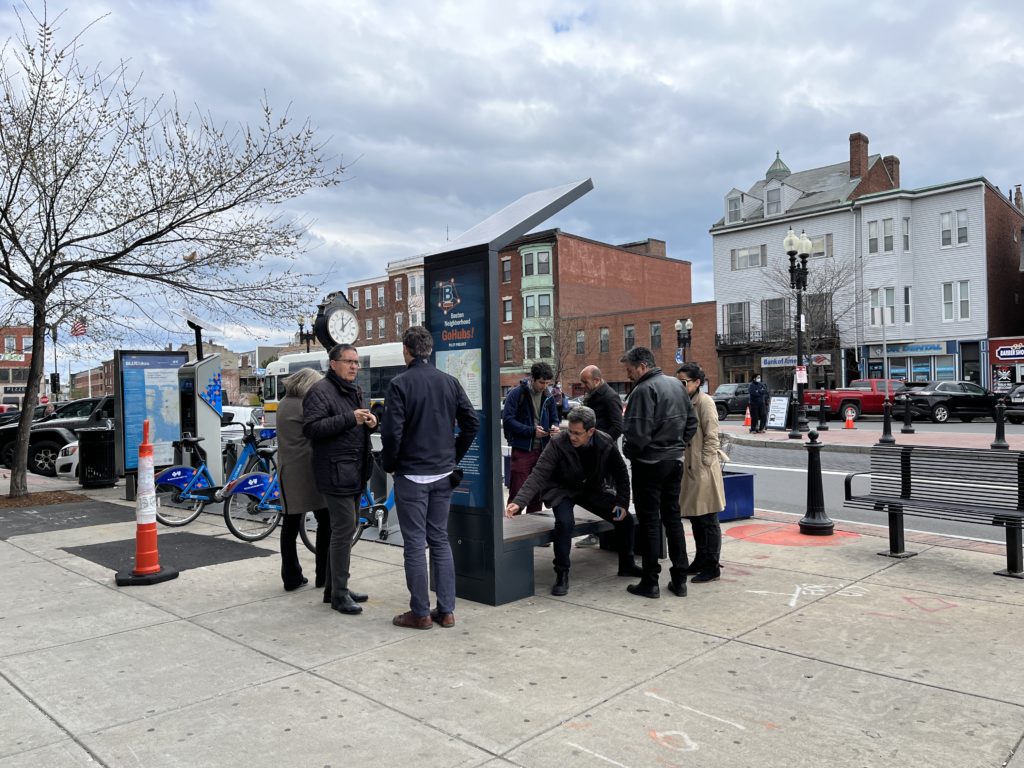
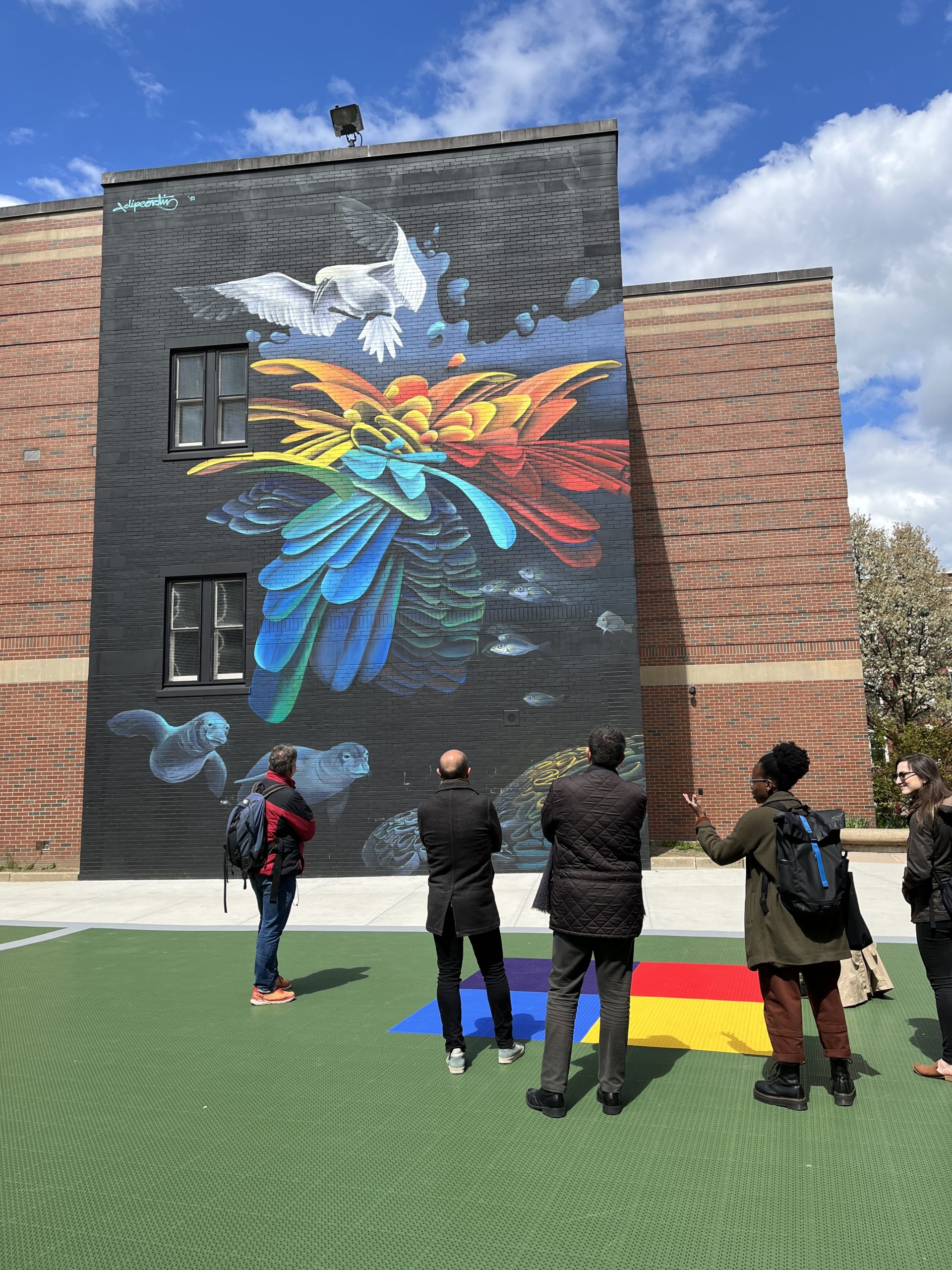
On April 28th, the visitants traveled to Arlington, where they got an overview of the Arlington County Community Energy Plan (CEP) and the transition from the 2013 CEP to the 2019 CEP, along with policies, programs, partnerships, and financing mechanisms to advance their energy plans.
The Arlington team also presented their work around mobility and transport, which included multimodal and micro-mobility innovation and a focus on smart growth mobility. Regarding the renovation wave, Arlington has been focusing on the transition in government and private sector buildings, the growth of LEED certifications, increased electrification, new policies, and the development of a site plan review process to inform high-performance buildings. Examples include the Discovery School and the new Amazon HQ2.
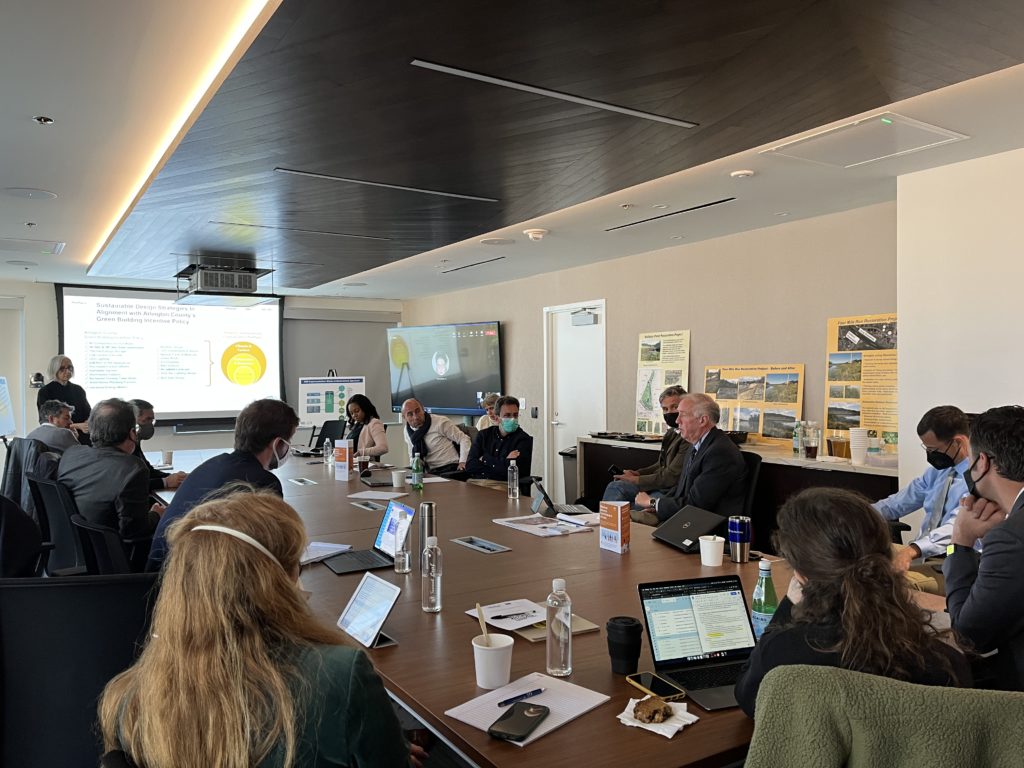
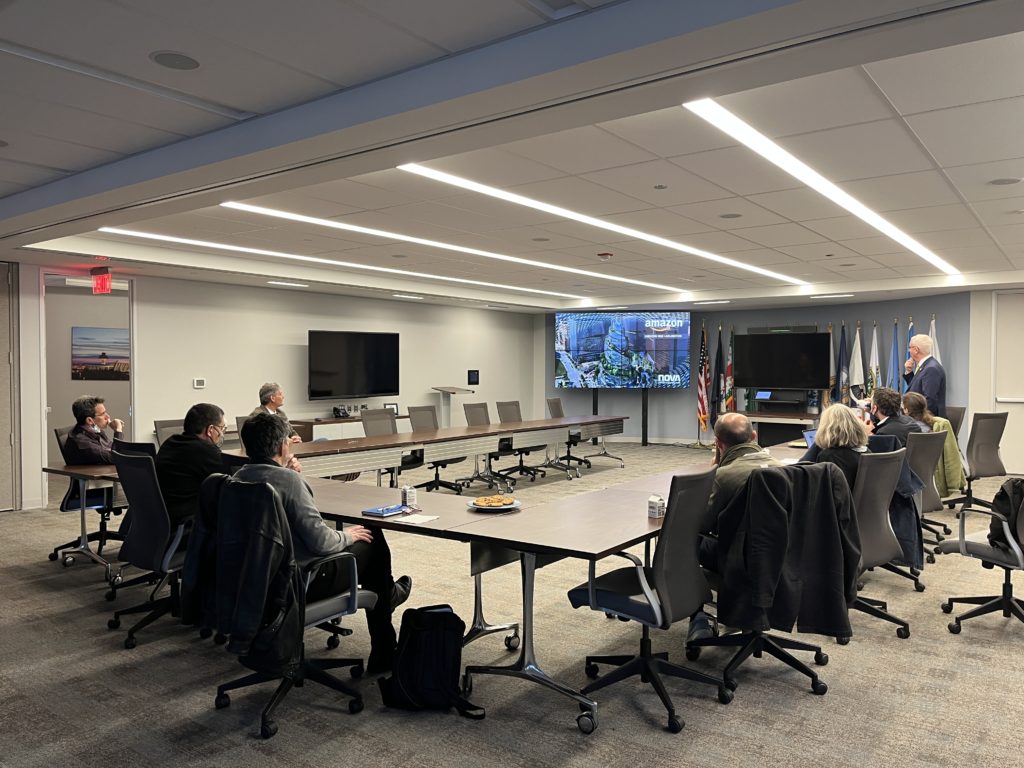
The two final presentations centered around green infrastructure to prevent flooding and affordable housing projects. Afterward, AMB, Boston, and Arlington delegates traveled to the site where the new Amazon Headquarters will be located. The Crystal City development, presented during the morning session, includes large-scale energy-efficient buildings. As a result, Arlington County has developed a new transport plan which will expand sidewalks, reduce car lanes, and add new bike paths.
Four Mile Run Conservatory Foundation led the last activity in Alexandria. The organization has worked with community groups and the City of Alexandria to remediate and maintain the river along Four Mile Run. Its mission is to promote nature, culture, and community through restoration, advocacy, recreation, and education. Working with government officials and community organizations has transformed the river’s physical and environmental aspects and provided a sanctuary for low-income areas surrounding the river. The group also visited Casa Chirilagua along Four Mile Run, a non-profit that offers a wide range of community programs for all ages.
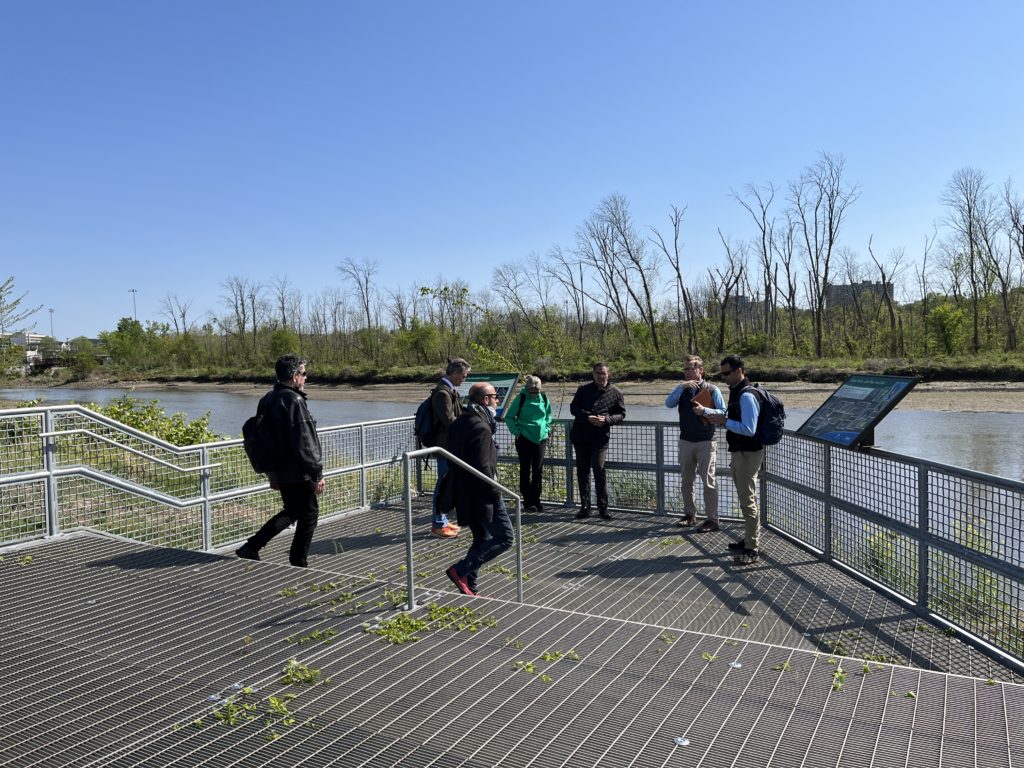
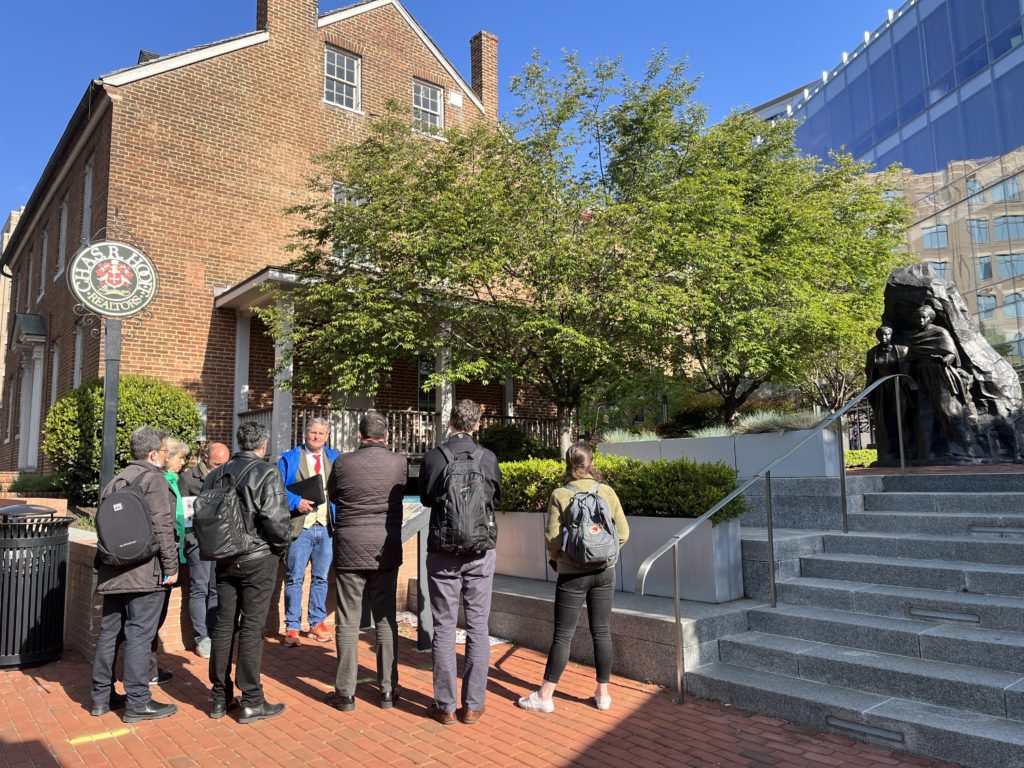
Finally, on the last day, Christopher Ziemann, Transportation Planning Chief of the City of Alexandria, gave a walking tour of Duke Street, where he pointed out how the transport hub has transformed the area. Dale Medearis, a Senior Regional Planner at the Northern Virginia Regional Commission (NVCR) and a core participant of IURC NA, also took the group on a walking tour of downtown Alexandria highlighting the integration of projects dealing with historical interpretation and racial injustice as well as, large-scale urban infrastructure repurposing. The group then gathered at the offices of the NVCR, where Robert Lazaro,Executive Director, presented their role within the surrounding cities and their different initiatives related to energy. His introduction was followed by John Morrill, Division Manager for Innovation and Sustainability, who provided a comprehensive overview of energy and climate planning in Fairfax County. Their goal is to cut 50% of GHG emissions by 2030 and 75% of GHG by 2040. They also have programs focused on education and retrofitting and the successful Solarize initiative that has considerably incremented the number of solar panels in Fairfax County.
The study visit ended at Dulles Airport, one of the largest airports in the US. Delegates met with the board and energy experts, who presented initiatives to increase the electrification of the airport, such as new infrastructure, a microgrid, and the extension of the newly finished Metrorail silver line that allows commuters to arrive directly at the airport via the metro.
